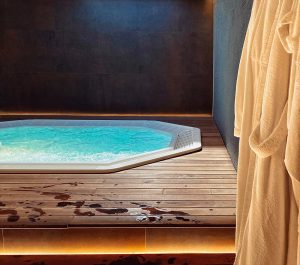Introduction to Glass Strip Technology
Revolutionizing the world of home improvement and outdoor living, glass strip technology is a cutting-edge innovation that’s taking the industry by storm. This ingenious technology leverages the unique properties of glass to create stunning, energy-efficient, and highly durable additions to your home, such as glass verandas. The technology involves the use of fine glass strips, enhanced by a proprietary process known as Glass Core Technology (GCT), to create custom circuits on a glass substrate. But what exactly is glass strip technology, and why should homeowners in the UK consider it for their glass verandas or garden rooms? Let’s delve deeper into this fascinating innovation and explore its numerous benefits.

Understanding Glass Core Technology
Glass Core Technology (GCT) is a novel approach that has revolutionised the way we utilise glass in various applications, including verandas and garden rooms. This section seeks to demystify this technology, explaining what it is, how it works, and the key components that make it so effective.
What is Glass Core Technology?
Glass Core Technology is a proprietary process that maximises the performance benefits of glass. It involves creating small diameter, fine pitch Through-Glass Vias (TGVs) that are metalised and hermetically sealed. This technology leverages the unique properties of glass to deliver superior performance and versatility in various applications.
How Does Glass Core Technology Work?
The operation of Glass Core Technology is a fascinating process. It involves the creation of Through-Glass Vias (TGVs) – small, fine pitch conduits through the glass that are metalised to allow for electrical conductivity. These TGVs are then hermetically sealed, ensuring that they are impervious to air and water, which enhances their durability and longevity.
The TGVs are linked via a unique thin film Redistribution Layer (RDL) process. This process allows for the creation of custom circuits on a glass substrate. The end product is a glass core with high electrical and thermal performance, making it ideal for various applications, including glass verandas and garden rooms.
The Role of Through-Glass Vias (TGVs) and Redistribution Layer (RDL) in Glass Core Technology
A critical element in Glass Core Technology is the Through-Glass Vias (TGVs). These are essentially miniature tunnels through the glass that are metalised to allow electrical currents to pass through. TGVs are instrumental in creating custom circuits on the glass substrate, thereby opening up a world of possibilities in terms of functionality and design.
The Redistribution Layer (RDL) is another crucial component of the GCT. This thin film process connects the TGVs, enabling the fan-out of chip and package interconnects. The RDL not only plays a significant role in the functionality of the glass core but also lowers the costs compared to traditional silicon-based interposers.
In conclusion, Glass Core Technology is a transformative innovation that harnesses the potential of glass to a whole new level. Its application in glass verandas and garden rooms presents homeowners with an opportunity to enjoy the aesthetic appeal and unique functionalities that this technology offers.
The Process of Glass Manufacturing
In order to fully appreciate the benefits of glass strip technology in your verandas, it’s essential to understand how glass is manufactured. The process involves a series of well-coordinated steps, from the selection of high-quality raw materials to the use of advanced melting technologies and various hot forming techniques.
The Selection of High-Quality Raw Materials
The manufacture of glass begins with the precise definition of raw materials. Quality is paramount at this stage as it directly influences the performance of the final product. High-quality raw materials minimize impurities in the final glass product, ensuring it meets the specified technical properties and delivers the desired performance. These ingredients are carefully mixed in preparation for the melting process.
The Use of Advanced Melting Technologies
The mixed raw materials then undergo either tank melting – the most common method – or pot melting, which is suitable for small volumes or glass with special optical characteristics. The melting process is conducted in four phases: batch melting (by heating the materials), refining (to eliminate gas bubbles), homogenization (to ensure uniformity), and conditioning.
This process is facilitated by advanced melting technologies that have been refined over decades of experience. For example, Glass Core Technology, as previously mentioned, leverages the unique properties of glass to create custom circuits on a glass substrate. This technology marks a significant advancement in the glass manufacturing process and allows for the creation of glass strips with unique technical properties.
The Different Hot Forming Techniques Used in Glass Manufacturing
Once the glass has been melted and conditioned, it then undergoes a hot forming process. This involves shaping the molten glass into its final form using various techniques. Some of these include the down-draw process for making thin and ultra-flat glasses, up-draw for producing larger glass forms, rolled for creating textured glass, and tube drawing for manufacturing hollow glass tubes or rods.
Each of these techniques is suited to different applications and results in glass products with distinct properties. For instance, the down-draw process, developed exclusively by SCHOTT, is ideal for producing thin and ultra-thin glasses with exceptionally tight tolerances, creating a naturally fire-polished thin sheet. This process is adaptable and can be reconfigured to handle different varieties of glass, making it a versatile tool for glass manufacturing.
In the next section, we will delve into the specific benefits of glass strip technology in verandas, highlighting how these manufacturing processes result in a product that is not only aesthetically pleasing but also delivers superior performance.

The Benefits of Glass Strip Technology in Verandas
Step into the realm of beauty and functionality with glass strip technology in verandas. This innovative technology is making waves in the home improvement industry, offering an array of benefits that make it a highly sought-after option for homeowners. From enhanced aesthetic appeal to improved energy efficiency, let’s explore the advantages of integrating glass strip technology into your veranda.
Enhanced Aesthetic Appeal
One of the most striking benefits of glass strip technology in verandas is the heightened aesthetic appeal it brings to your home. The use of glass strips in the design of the veranda offers a sleek and modern appearance that can effortlessly complement any architectural style. The transparent nature of the glass allows for unobstructed views of the outdoors, creating a seamless connection between your living space and nature. Whether you’re enjoying a peaceful afternoon or entertaining guests, a glass veranda with glass strip technology can significantly enhance the beauty and ambiance of your home.
Improved Energy Efficiency
Glass strip technology isn’t just about visual appeal – it also boasts impressive energy efficiency. The use of insulating glazing units (IGUs), low-emissivity coatings, and gas fills between the panes all contribute to reducing energy loss and conserving heat or coolness within your home. The result is a more comfortable living environment and potential savings on your energy bills.
Increased Durability and Strength
Glass strip technology also means durability. The use of glass core technology, characterized by small diameter, fine pitch Through-Glass Vias (TGVs) and a unique thin film Redistribution Layer (RDL), results in a robust and resilient glass structure. This ensures that your veranda is built to last, capable of withstanding the elements and everyday wear and tear.
High Resistance to Vibration and Temperature
One of the distinguishing features of glass strip technology is its high resistance to vibration and temperature changes. The use of inert, non-toxic gases like argon or krypton between the panes, along with warm edge spacers, offer excellent thermal performance and stability. This makes the veranda less susceptible to temperature fluctuations and more comfortable for year-round use.
Low Electrical Loss
For those who value eco-friendliness, glass strip technology is a noteworthy choice. The process of creating glass strips involves low electrical loss, which contributes to a reduced carbon footprint. This means you can enjoy your stunning veranda while also doing your part for the environment.
Incorporating glass strip technology into your veranda design can upgrade your outdoor living experience. Not only does it add a touch of elegance to your home, but it also offers practical benefits that enhance comfort and efficiency. Whether you’re planning to install a new veranda or upgrade an existing one, consider the advantages of glass strip technology and see how it can transform your outdoor space.

Glass Strip Technology in Glass Verandas UK
Step into the future of home design with Glass Verandas UK, where cutting-edge glass strip technology is harmoniously married with timeless aesthetics and eco-responsibility.
The Use of Innovative Glass Strip Technology in Glass Verandas UK
At the heart of our verandas is the innovative glass strip technology. This technology, highly acclaimed for its use in various industries, is now being employed to revolutionize home improvement. In the context of verandas, it offers improved energy efficiency, increased durability, and reduced electrical loss.
The use of glass strip technology in our verandas ensures that homeowners enjoy the beauty of their outdoor spaces without compromising on comfort or energy efficiency. The technology is designed to maintain a comfortable temperature within the veranda, reducing the need for additional heating or cooling systems.
The Eco-Friendly Approach of Glass Verandas UK
At Glass Verandas UK, we believe in creating beautiful spaces that are not just visually appealing, but also kind to the environment. We commit to using eco-friendly materials, and our glass strip technology plays a crucial role in this.
In line with our commitment to sustainability, we utilize energy-efficient glazing options. The selection of the glazing is one of the most important decisions regarding energy efficiency. We mostly use double or triple glazing units, known as “insulating glazing units”, or IGUs, which come with a range of properties based on the type of glass selected, the coatings on the glass, and the gas used to fill the space between the panes.
The Seamless Connection Between the House and the Veranda
Our verandas are designed to create a seamless connection between your home and the outdoors. With the use of glass strip technology, we can create a space that feels like an extension of your home, rather than an add-on. The transparency of the glass panels allows sunlight to filter undisturbed, allowing you to enjoy the natural light and limiting the consumption of electric energy to the minimum.
With our glass verandas, you can enjoy the beauty of your garden, the changing seasons, and the sky above, all from the comfort and convenience of your home. Whether you want to use your veranda as a relaxation area, a space for entertaining, or even as a greenhouse for your plants, our glass strip technology makes it all possible.
In conclusion, our use of innovative glass strip technology, coupled with our eco-friendly approach and our commitment to creating seamless indoor-outdoor living spaces, sets Glass Verandas UK apart. We invite you to experience the difference for yourself.
The Future of Glass Strip Technology in Home Improvement
As we look towards the horizon of home improvement, the potential of glass strip technology in shaping next-generation microelectronics needs and its applications in other areas of home design are boundless.
The Role of Glass Strip Technology in Next-Generation Microelectronics Needs
The world of home improvement is not immune to the influence of technology. As homes become smarter, there is an increased demand for integrating microelectronics into the very fabric of our living spaces. Glass strip technology, particularly the glass core technology, has a significant role to play in this new era of home improvement.
As mentioned earlier, glass core technology leverages the performance benefits of glass by creating small diameter, fine pitch Through-Glass Vias (TGVs) that are metalized and hermetically sealed. These TGVs are linked via a unique thin film Redistribution Layer (RDL) process to create custom circuits on a glass substrate.
This technology can be integrated within the walls, floors, and even glass verandas of a home. Imagine a home where the very walls become interactive touch panels, or where your glass veranda can sense the weather outside and adjust its opacity and temperature accordingly. The possibilities are just beginning to be explored, and glass strip technology is at the forefront of this revolution.
The Potential Applications of Glass Strip Technology in Other Areas of Home Improvement
The application of glass strip technology goes beyond verandas and patios. Its benefits can be harnessed in several other areas of home improvement.
In interior design, glass walls, as highlighted by Glass Verandas UK, are becoming a popular trend due to their high light transmittance, creating a sense of spaciousness and style. The use of glass strip technology can enhance the functionality and aesthetic appeal of these walls, allowing them to serve as interactive partitions or mood-enhancing light panels.
In terms of energy efficiency, windows made using glass strip technology can significantly improve a home’s insulation, leading to lower energy consumption and cost savings. This application is particularly relevant in the UK, where the weather can be unpredictable and energy efficiency is a high priority for homeowners.
Finally, in the realm of bathroom design, glass strip technology can be used to create innovative, stylish, and functional shower screens and backsplash designs that are easy to clean, durable, and resistant to staining or hosting bacteria.
As we move forward, it’s clear that the future of home improvement is bright with the potential of glass strip technology. Whether it’s in creating smarter homes or enhancing the aesthetic and functional aspects of our living spaces, this innovative technology is set to revolutionize the way we live, one glass strip at a time.
Conclusion: The Impact of Glass Strip Technology on Verandas and Beyond
Unveiling the curtain on the future of home improvement, glass strip technology stands as a beacon of innovation, and its effects ripple far beyond the realm of verandas. With its wide-ranging benefits, from enhanced aesthetic appeal to improved energy efficiency and increased durability, this technology is not just transforming homes, but redefining the very way we experience our living spaces.
The use of innovative glass strip technology by companies like Glass Verandas UK is proof of the impact this technology has made in the veranda industry. By hiding unsightly screws and creating a seamless connection between the house and the veranda, this technology has elevated the charm and functionality of verandas, making them a coveted addition to any home.
Beyond verandas, the potential applications of glass strip technology in other areas of home improvement are vast. As the technology continues to evolve, we can expect it to play a pivotal role in next-generation microelectronics needs, possibly integrating smart home technology directly into the glass strips of windows, doors, and even furniture.
Moreover, the eco-friendly approach adopted by Glass Verandas UK, with the use of FSC and PEFC certified wood, signifies how this technology can be harnessed in a sustainable manner. This harmonious blend of technology and nature not only enhances the appeal of our homes but also contributes to a greener planet.
In conclusion, the impact of glass strip technology on verandas and beyond is profound. This technology, with its host of benefits, is set to revolutionize our living spaces, making them more aesthetically pleasing, energy-efficient, and eco-friendly. The future of home improvement is here, and it’s clear, it’s durable, it’s efficient – it’s glass strip technology.


